Ethylparaben
Synonym(s):EP;Ethyl 4-hydroxybenzoate;Ethylparaben
- CAS NO.:120-47-8
- Empirical Formula: C9H10O3
- Molecular Weight: 166.17
- MDL number: MFCD00002353
- EINECS: 204-399-4
- SAFETY DATA SHEET (SDS)
- Update Date: 2025-12-22 14:18:24
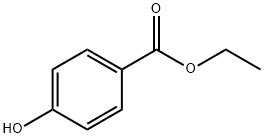
What is Ethylparaben?
Chemical properties
Ethylparaben occurs as a white, odorless or almost odorless, crystalline powder.
The Uses of Ethylparaben
Ethylparaben is mainly used as antiseptics in cosmetics, food and medicine. It is also can be used as feed preservatives and antiseptic for bacteria.
Ethylparaben is a preservative that is used in the formulation of cosmetics and personal care products in order to extend the shelf-life by preventing microbial contamination. In most formulations, parabens are used at very low levels ranging from 0.01 to 0.3%.
Ethylparaben, a novel sorbent for solid-phase extraction, was used to study its retention property. It has high extraction efficiency towards the compounds tested owing to the electrostatic interaction, hydrophobic interaction and hydrogen bonding.
What are the applications of Application
Ethyl Paraben is An anti-microbial agent
Production Methods
Ethylparaben is prepared by the esterification of p-hydroxybenzoic acid with ethanol (95%).
Definition
ChEBI: Ethylparaben is an ethyl ester resulting from the formal condensation of the carboxy group of 4-hydroxybenzoic acid with ethanol, It has a role as an antimicrobial food preservative, an antifungal agent, a plant metabolite and a phytoestrogen. It is a paraben and an ethyl ester.
Synthesis Reference(s)
The Journal of Organic Chemistry, 39, p. 3343, 1974 DOI: 10.1021/jo00937a007
Pharmaceutical Applications
Ethylparaben is widely used as an antimicrobial preservative in
cosmetics,food products, and pharmaceutical formulations.
It may be used either alone or in combination with other paraben
esters or with other antimicrobial agents. In cosmetics it is one of the
most frequently used preservatives.
The parabens are effective over a wide pH range and have a
broad spectrum of antimicrobial activity, although they are most
effective against yeasts and molds.
Owing to the poor solubility of the parabens, paraben salts,
particularly the sodium salt, are frequently used. However, this may
cause the pH of poorly buffered formulations to become more
alkaline.
Safety
Ethylparaben and other parabens are widely used as antimicrobial
preservatives in cosmetics, food products, and oral and topical
pharmaceutical formulations.
Systemically, no adverse reactions to parabens have been
reported, although they have been associated with hypersensitivity
reactions. Parabens, in vivo, have also been reported to exhibit
estrogenic responses in fish.(10) The WHO has set an estimated total
acceptable daily intake for methyl-, ethyl-, and propylparabens at
up to 10 mg/kg body-weight.
LD50 (mouse, IP): 0.52 g/kg
LD50 (mouse, oral): 3.0 g/kg
Metabolism
Not Available
Storage
Aqueous ethylparaben solutions at pH 3–6 can be sterilized by
autoclaving, without decomposition. At pH 3–6, aqueous
solutions are stable (less than 10% decomposition) for up to about
4 years at room temperature, while solutions at pH 8 or above are
subject to rapid hydrolysis (10% or more after about 60 days at
room temperature).
Ethylparaben should be stored in a well-closed container in a
cool, dry place.
Incompatibilities
The antimicrobial properties of ethylparaben are considerably
reduced in the presence of nonionic surfactants as a result of
micellization. Absorption of ethylparaben by plastics has not been
reported, although it appears probable given the behavior of other
parabens. Ethylparaben is coabsorbed on silica in the presence of
ethoxylated phenols. Yellow iron oxide, ultramarine blue, and
aluminum silicate extensively absorb ethylparaben in simple
aqueous systems, thus reducing preservative efficacy.
Ethylparaben is discolored in the presence of iron and is subject
to hydrolysis by weak alkalis and strong acids.
Regulatory Status
Accepted as a food additive in Europe. Included in the FDA Inactive Ingredients Database (oral, otic, and topical preparations). Included in nonparenteral medicines licensed in the UK. Included in the Canadian List of Acceptable Non-medicinal Ingredients.
Properties of Ethylparaben
| Melting point: | 114-117 °C (lit.) |
| Boiling point: | 297-298 °C (lit.) |
| Density | 1.1708 (rough estimate) |
| vapor pressure | 0.00012 hPa (25 °C) |
| refractive index | 1.5286 (estimate) |
| Flash point: | 297-298°C |
| storage temp. | 2-8°C |
| solubility | Very slightly soluble in water, freely soluble in ethanol (96 per cent) and in methanol. |
| form | Crystalline Powder |
| pka | 8.31±0.13(Predicted) |
| color | White |
| PH | 4.5-5.5 (H2O, 20°C) (saturated solution) |
| Odor | at 100.00?%. mild phenolic |
| Water Solubility | Slightly soluble in water. |
| Merck | 14,3837 |
| BRN | 1101972 |
| Stability: | Stable. Combustible. Incompatible with strong oxidizing agents, strong bases. |
| CAS DataBase Reference | 120-47-8(CAS DataBase Reference) |
| NIST Chemistry Reference | Ethylparaben(120-47-8) |
| EPA Substance Registry System | Ethylparaben (120-47-8) |
Safety information for Ethylparaben
| Signal word | Warning |
| Pictogram(s) |
 Exclamation Mark Irritant GHS07 |
| GHS Hazard Statements |
H303:Acute toxicity,oral H315:Skin corrosion/irritation H317:Sensitisation, Skin H319:Serious eye damage/eye irritation |
| Precautionary Statement Codes |
P261:Avoid breathing dust/fume/gas/mist/vapours/spray. P264:Wash hands thoroughly after handling. P264:Wash skin thouroughly after handling. P272:Contaminated work clothing should not be allowed out of the workplace. P280:Wear protective gloves/protective clothing/eye protection/face protection. P501:Dispose of contents/container to..… |
Computed Descriptors for Ethylparaben
Ethylparaben manufacturer
New Products
4,4-Difluoropiperidine hydrochloride tert-butyl 9-methoxy-3-azaspiro[5.5]undecane-3-carboxylate Indole Methyl Resin N-Isopropylurea N,N-Dicyclohexylcarbodiimide(DCC) MELDRUMS ACID 5-METHYLISOXAZOLE-4-CARBOXYLIC ACID Magnessium Bis glycinate Zinc ascorbate 1-bromo-2-butyne 2-acetamidophenol 9(10H)-anthracenone Erythrosin B, 4-Piperidinopiperidine 2-((4-morpholinophenylamino) (methylthio) methylene) malononitrile 2,4-dihydroxybenzaldehyde 3-(4-morpholinophenylamino)-5-amino-1H-pyrazole-4-carbonitrile Methyl 2-methylquinoline-6-carboxylate 2,6-dichloro-4-nitropyridine 4-Bromo-2-chlorobenzonitrile 2-(benzylamino)acetic acid hydrochloride 4-(tert-Butoxycarbonylamino)but- 2-ynoic acid 3,4-dihydro-2H-benzo[b][1,4]dioxepine 1-Phenyl-1-cycloprppanecarboxylicacidRelated products of tetrahydrofuran
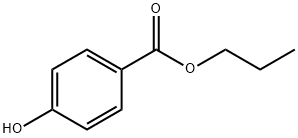

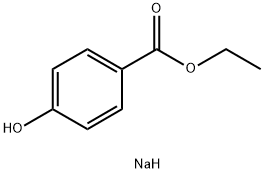

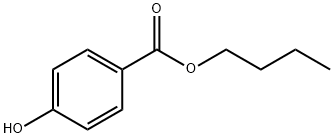

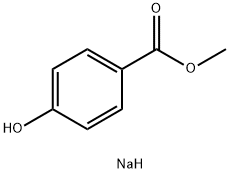
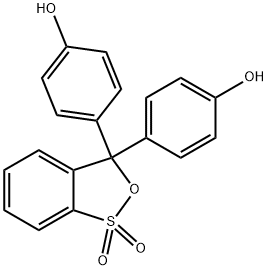
You may like
-
 ETHYL PARABEN 99%View Details
ETHYL PARABEN 99%View Details -
 Ethyl 4-Hydroxybenzoate CAS 120-47-8View Details
Ethyl 4-Hydroxybenzoate CAS 120-47-8View Details
120-47-8 -
 Ethyl p-hydroxybenzoate CAS 120-47-8View Details
Ethyl p-hydroxybenzoate CAS 120-47-8View Details
120-47-8 -
 Ethyl 4-hydroxybenzoate 96% CAS 120-47-8View Details
Ethyl 4-hydroxybenzoate 96% CAS 120-47-8View Details
120-47-8 -
![Ethyl 4-Hydroxybenzoate [for Biochemical Research] CAS 120-47-8](https://img.chemicalbook.in//Content/image/CP5.jpg) Ethyl 4-Hydroxybenzoate [for Biochemical Research] CAS 120-47-8View Details
Ethyl 4-Hydroxybenzoate [for Biochemical Research] CAS 120-47-8View Details
120-47-8 -
 ETHYL 4-HYDROXYBENZOATE Extra Pure CAS 120-47-8View Details
ETHYL 4-HYDROXYBENZOATE Extra Pure CAS 120-47-8View Details
120-47-8 -
 Ethyl ParabenView Details
Ethyl ParabenView Details
120-47-8 -
 Ethyl Paraben, Packaging Size: 25 kgView Details
Ethyl Paraben, Packaging Size: 25 kgView Details
120-47-8
